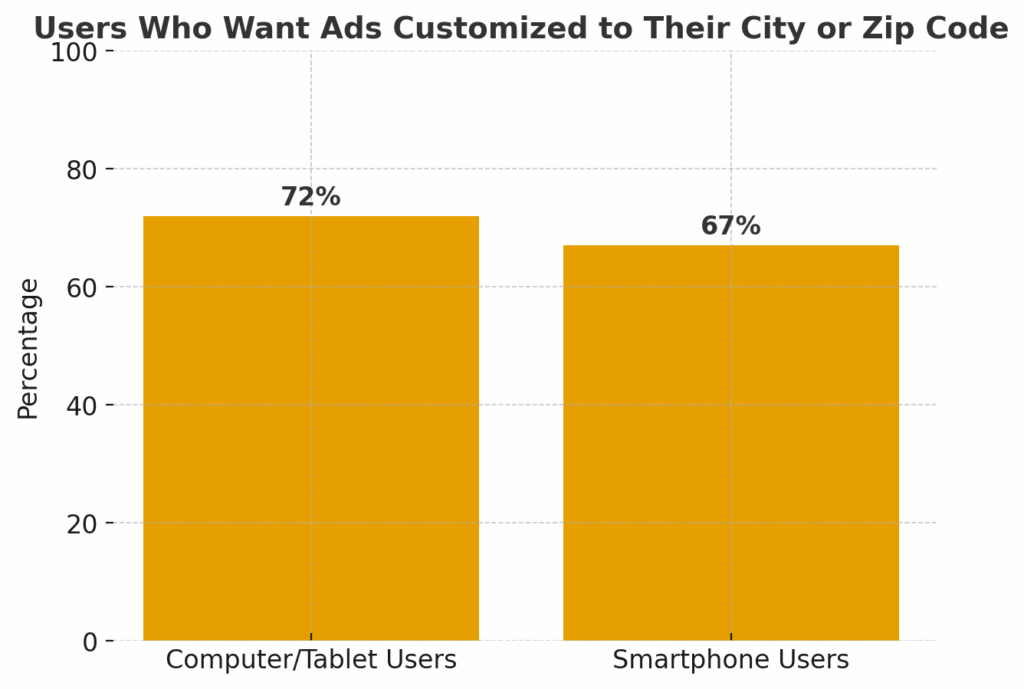Your customers don’t want to feel like they’re shopping from Mars. They want brands that get their neighborhood, their timezone, and why they need that hoodie delivered before the weather changes.
Hyperlocal ecommerce isn’t about slapping city names into email subject lines and calling it personalized. It’s about building experiences that actually matter to people based on where they live, shop, and expect convenience.
For scaling ecommerce brands, the challenge is making this work without creating operational chaos. Hyperlocal marketing isn’t about tiny wins in individual zip codes. It’s about building systems that personalize at scale while keeping your team sane and your margins intact.
Here’s what you need to know to get it right.
Why Your Customers Expect You to Know Where They Are
The numbers don’t lie… 76% of consumers who search for “near me” visit a business within a day, and 88% of individuals who use a smartphone for a local search visit related store within a week. People aren’t just browsing, they’re hunting for businesses that feel accessible and relevant to their actual lives.

This isn’t just about local businesses anymore. Ecommerce brands are waking up to the fact that location context drives loyalty. Same-day delivery expectations, regional promotions tied to local events, and messaging that reflects the customer’s reality all get higher engagement than generic campaigns.
Think about it: A brand that says “Order today, delivered from our Denver warehouse tomorrow” feels more trustworthy than “2-3 day shipping.” A back-to-school promotion that launches in late July for Southern states but waits until August in the Midwest shows you understand different customer rhythms.
Even storytelling benefits. Featuring local customers in campaigns or spotlighting regional community partnerships helps people feel represented instead of marketed to.
The Scalability Problem Nobody Talks About
Hyperlocal sounds straightforward until you try to execute it across multiple markets without burning through your team or your budget.
The appeal is obvious because customers respond to localized experiences such that 72% of computer or tablet users and 67% of smartphone users want ads customized to their city or zip code. People prefer buying from brands that feel like they understand their context.

But execution gets messy fast. Running separate campaigns for every region creates manual work that doesn’t scale. The more you customize, the more you risk brand fragmentation where different markets get different impressions of who you are. Regional operations can drive up costs in ways that eat into the margins you’re trying to protect.
Hyperlocal isn’t just a marketing challenge, it’s an operational one. Without the right systems, automation, and brand alignment, what starts as a customer experience strategy can turn into inefficiency and inconsistency that hurts more than it helps.
Building Systems That Actually Scale
The key to making hyperlocal work at scale is building infrastructure that balances personalization with efficiency. Your customers get the relevance they want, your brand stays consistent, and your team doesn’t drown in manual work.
- Start with centralized data and smart segmentation. You can’t tailor experiences if you don’t know where customers are coming from or how they behave differently by region. Customer location, purchase patterns, and delivery preferences need to live in systems that actually talk to each other so every decision is grounded in real data, not guesswork.
- Invest in flexible site architecture. Your ecommerce platform should support dynamic content that adapts by geography (different delivery windows, local inventory levels, or region-specific messaging) without requiring separate sites or manual updates for every market.
- Automate the execution. Localized promotions and campaigns only work if they can trigger automatically based on geography and customer behavior. This removes the manual burden while keeping personalization sharp and timely.
- Connect your promises to your operations. A hyperlocal campaign promising two-day shipping for a region only works if your fulfillment systems can actually deliver on that timeline. Marketing promises need operational backing, or you’re setting customers up for disappointment.
Your customers get the relevance they want, your brand stays consistent, and your team doesn’t drown in manual work.
You’re right – more bullet points, less fluff. Here’s a tighter version:
From Local Relevance to Loyal Customers
Scalable hyperlocal isn’t about creating hundreds of disconnected regional campaigns. It’s about building connected systems where personalization, design, and operations reinforce each other.
The difference shows up in results:
- A skincare brand promoting “Perfect for Colorado’s dry climate” alongside altitude-specific products beats generic “moisturize daily” messaging every time
- Furniture retailers showing “2-day delivery to your Dallas neighborhood” with real local inventory convert better than vague shipping promises
- Apparel brands featuring local customers in regional campaigns get higher engagement than stock photo campaigns
- Food brands timing promotions around regional events (like local festivals or sports seasons) see stronger response rates
- Tech companies highlighting regional warehouse locations build more trust than generic “fast shipping” claims
When your systems know where customers are and what matters to them, the experience feels intentional. Customers remember brands that get their neighborhood, their timeline, and their needs. That’s loyalty that works even when competitors slash prices.
Making It Work Without the Headaches
Knowing customers want localized experiences is one thing. Building systems that deliver it consistently and profitably is another.
At Bighorn, we help brands turn hyperlocal strategy into execution that actually works. From dynamic ecommerce builds and automated campaign management to scalable frameworks that personalize without creating operational chaos, we focus on systems that grow with you.
Want to talk through how hyperlocal could work for your brand without derailing your current operations? Let’s dig into your stack and see where the opportunities are. Reach out.